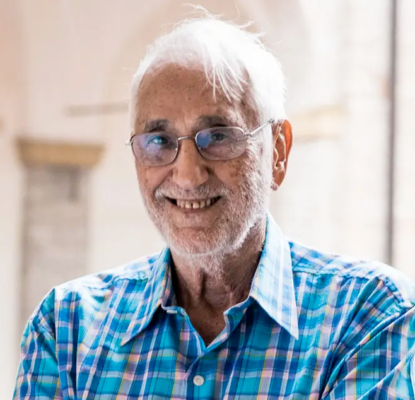April is Women's Eye Health and Safety Month - click here for FREE healthy vision tips
Dr. Walter Pierpaoli
 Walter Pierpaoli MD, PhD
Walter Pierpaoli MD, PhD
Dr. Walter Pierpaoli is one of the foremost anti-aging researchers in the world, specializing in immunology, endocrinology, neropeptides and aging.
His research findings have had profound implications and contributions in the development of the current Neuroendocrine Theory of Aging, indeed he was a personal friend of the late Dr. Vladimir Dilman,who co-authored “The Neuroendocrine Theory of Aging and Degenerative Disease” and was a highly respected senior member of the Soviet Academy of Sciences.
Dr. Pierpaoli’s findings regarding the use of Melatonin indicate that melatonin uniquely protects the pineal gland. Dr. Pierpaoli believes that the control of the circadian rhythms and the protection of the pineal is of critical importance in anti-aging and indeed rejuvenation therapy. He has published this information, in his current best seller: The Melatonin Miracle. Dr. Pierpaoli is also an award holder for Excellence in Anti-Aging Medicine from the Monte Carlo Antiaging Conference.
Notable achievements:
- Founded the Stromboli Conference on Aging and Cancer in Italy; 2004
- Director of Biancalana – Masera Foundation for the aged in Ancona Italy.
- Granted the award for Excellence in Anti-Aging Medicine, from the Monte Carlo Antiaging Conference ™
Author of the following books:
- Reversal of Aging – Resetting the Pineal Clock
- Reversal of Aging – Myth and Reality: Beyond the man made barriers
- The Aging Clock
- The Melatonin Miracle
- Physiological Senescence and Its Postponement: Theoretical Approaches and Rational Interventions
- Neuroimmunomodulation: Interventions in Aging and Cancer
Publications:
- Pierpaoli, W. and Regelson W. with Carol Colman, “The Melatonin Miracle”, Simon & Schuster, New York, 1995.
- Pierpaoli, W. The pineal gland: a circadian or a seasonal aging clock? Aging 3: 99-101, 1991.
- Pierpaoli, W. Dall’Ara, A, Pedrinis, E. and Regelson, W. The pineal control of aging. The effects of melatonin and pineal grafting on the survival of older mice. Second Stromboli Conference on Aging and Cancer, June 1990. Ann. N.Y. Acad. Sci. 621: 291-313, 1991.
- Pierpaoli, W., and Lesnikov, V.A. The pineal aging clock. Evidence, models, mechanisms, interventions. The Aging Clock. Third Stromboli Conference on Aging and Cancer, June 1993. Ann. N.Y. Acad. Sci. 719: 461-473, 1994.
- Pierpaoli, W. and Regelson, W. Pineal control of aging: effect of melatonin and pineal grafting on aging mice. Proc. Natl. Acad. Sci. USA, 94: 787-791, 1994.
- Mocchegiani, E., Bulian, D., Santarelli, L., Tibaldi, A., Muzzioli, M., Pierpaoli, W. and Fabris, N. The immuno-reconstituting effect of melatonin or pineal grafting and its relation to zinc pool in aging mice. J. Neuroimmunol. 53: 189-201, 1994.
- Mocchegiani, E., Bulian, D., Santarelli, L., Tibaldi, A., Muzzioli, M., Lesnikov, V., Pierpaoli, W. and Fabris, N. The zinc pool is involved in the immunoreconstituting effect of melatonin in pinealectomized mice. J. Pharmac. & Exp. Therap. 277: 1200-1208, 1996.
- Mocchegiani, E., Bulian, D., Santarelli, L., Tibaldi, A., Pierpaoli, W. and Fabris, N. The zinc-melatonin interrelationship. A working hypothesis. The Aging Clock. Third Stromboli Conference on Aging and Cancer, June 1993. Ann. N.Y. Acad. Sci. 719: 298-307. 1994.
- Fabris, N. Neuroendocrine-immune aging: an integrative view on the role of zinc. The Aging Clock. Third Stromboli Conference on Aging and Cancer, June 1993. Ann. N.Y. Acad. Sci.719: 353-368, 1994.
- Meister, A. and Anderson, M.E. Glutathione. Ann. Rev. Biochem. 52: 711-760, 1983.
- Changxian Yi et al, effects of melatonin in age-related macular degeneration, Ann NY Acad Sci, 1057:384-392,2005
“We’ve seen many miraculous reversals of diseases in our patients with this formula. This latest study showing that it can even reverse age-related macular degeneration is truly a breakthrough in treating this condition.”
Walter Pierpaoli MD, Phd


